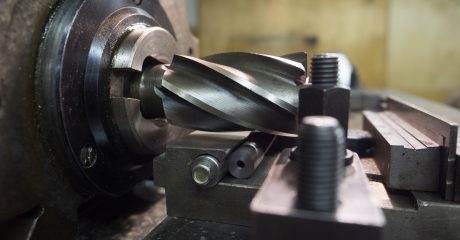When a business needs high precision machining, they generally need either a 4-axis or 5-axis machine. Most fabrication is done with 3-axis machines, such as a traditional CNC machine or manual milling machine. A 4-axis machine is not always needed but it will be able to produce tools and parts that have far greater complexity and fidelity.
What is a 3, 4, or 5 Axis Machine?
A 3-axis machine is very simple to understand. The axis is the direction that the machine cuts in. A 3-axis machine will cut left to right, front to back, and up to down. When parts are being produced, they will be cut in these directions. 3-axis machining, especially on a good machine, can be very precise… but not as precise as a 4-axis machine.
A 4-axis machine adds rotation to the mix. The part can be rotated, which means that more complex areas can be cut out from it. As an example, a 3-axis machine may be able to cut slots in a part, but only from front to back. A 4-axis machine would be able to rotate this, so holes could be on every side.
Finally, a 5-axis machine doesn’t add a true axis, but rather another type of rotation. This means that the object can essentially “free rotate” in any direction, opening up a large number of possibilities. Machining is programmed so that parts can be manufactured through clever use of a 3-axis machine alone. However, a 4-axis machine makes production faster and more reliable when it comes to more complex parts.
Which Type of Machining Do You Need?
The type of machining you need is based on the type of part you need. It isn’t always advantageous to move up in axis. If you have a fairly simple piece, it may simply add cost, time, and complexity. In general:
- 3-axis. Use a 3-axis machine if you want a fast, simple product that can be made using left to right, up to down, and back to front cutting. This includes milling slots, drilling holes and cutting any sharp edges.
- 4-axis. Use 4-axis machines if you need high quality, detailed work, including precise engravings, medical equipment creation and complex drilling and milling.
- 5-axis. Use 5-axis machines if you need incredibly precise, fast work that requires very tight tolerances. A 5-axis machine can create anything from aerospace products to artificial bones.
For the most part, 4-axis machining gives you the quality and precision that you will likely need. Very few custom designs require 5-axis machining, and 4-axis machining will often be preferred over 3-axis. Custom Tool & Grinding has state-of-the-art multi-axis capabilities designed to produce any type of custom tool to the best standards and fidelity. If you want your tool custom built, cut or ground, contact the experts at Custom Tool today.
